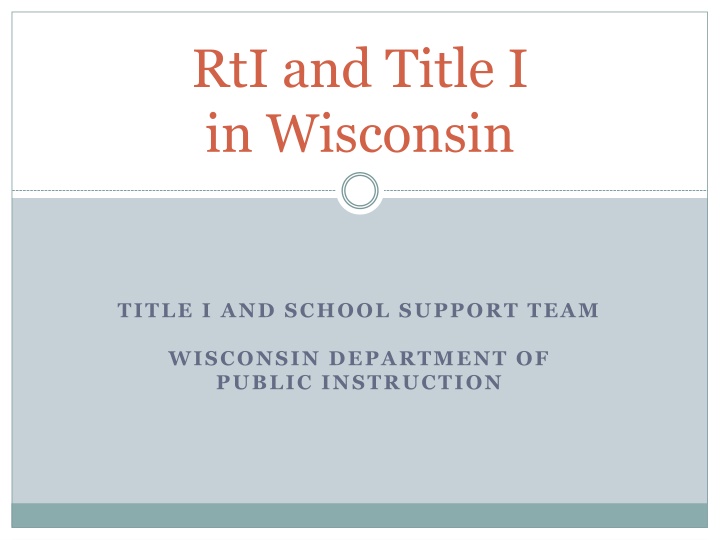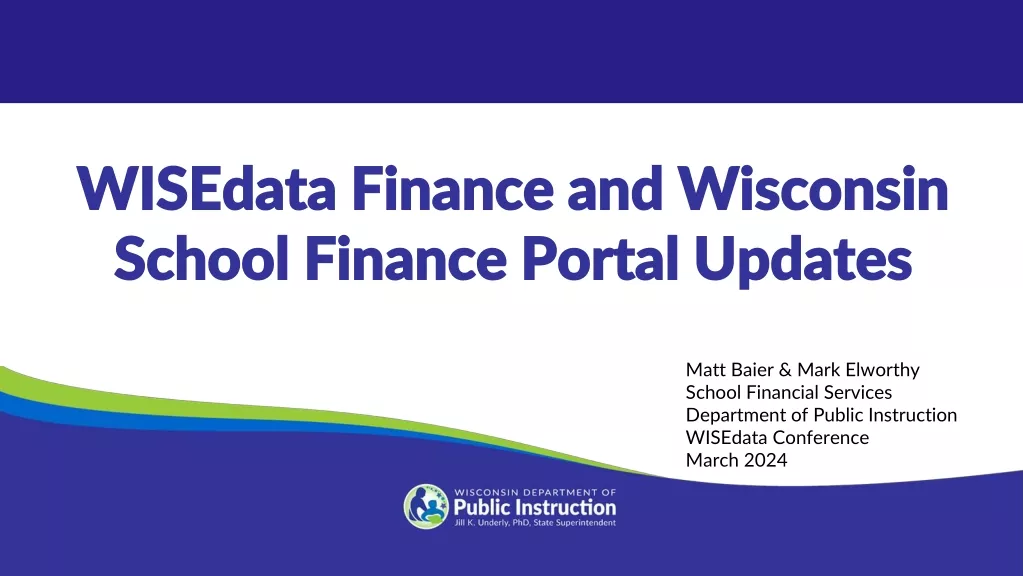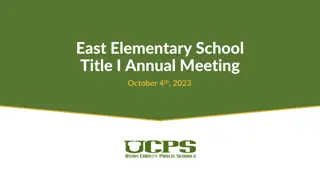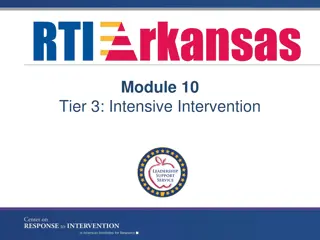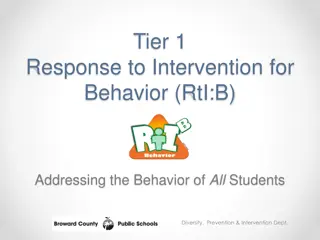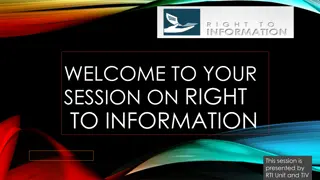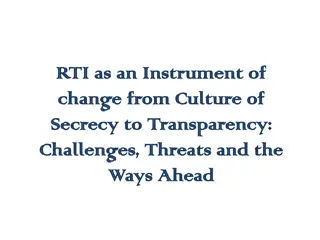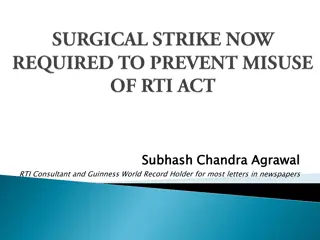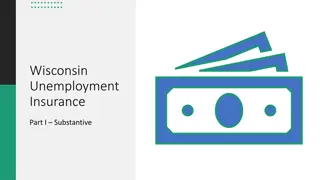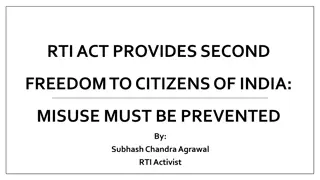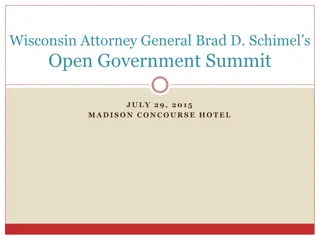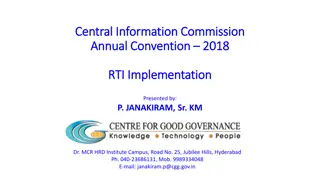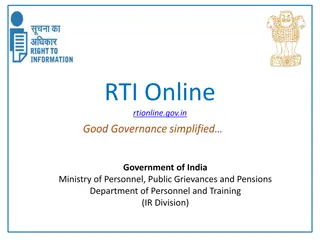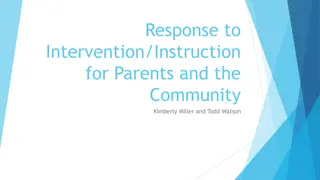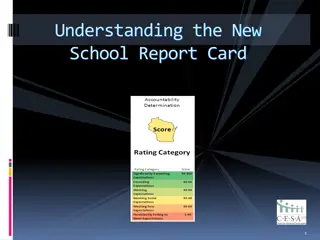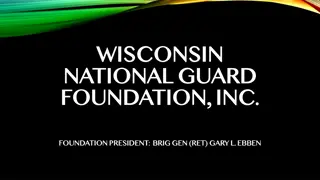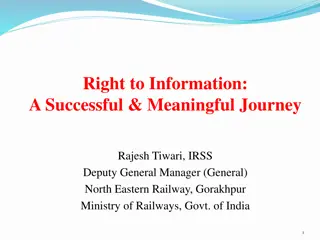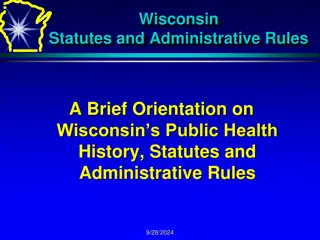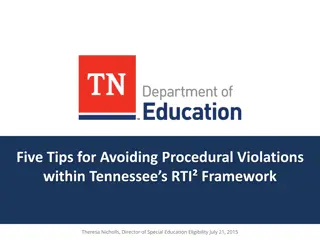RtI and Title I in Wisconsin Overview
Providing an in-depth look into Wisconsin's RtI and Title I programs, funding scenarios, implementation vision, and funding considerations. Explore the principles, objectives, and defined processes underlying the successful implementation of RtI and Title I in Wisconsin school systems.
Download Presentation

Please find below an Image/Link to download the presentation.
The content on the website is provided AS IS for your information and personal use only. It may not be sold, licensed, or shared on other websites without obtaining consent from the author.If you encounter any issues during the download, it is possible that the publisher has removed the file from their server.
You are allowed to download the files provided on this website for personal or commercial use, subject to the condition that they are used lawfully. All files are the property of their respective owners.
The content on the website is provided AS IS for your information and personal use only. It may not be sold, licensed, or shared on other websites without obtaining consent from the author.
E N D
Presentation Transcript
RtI and Title I in Wisconsin TITLE I AND SCHOOL SUPPORT TEAM WISCONSIN DEPARTMENT OF PUBLIC INSTRUCTION
RtI and Title I in Wisconsin Objectives: Provide an overview of Wisconsin s definition and vision of RtI Look at how RtI can be supported in a schoolwide and targeted Title I programming Give examples of RtI and Title I funding scenarios Look at RtI programming in a Targeted Assistance Title I program
RtI in Wisconsin Defined: RtI is a process for achieving higher levels of academic and behavioral success for all students through: High quality instructional practice Continuous review of student progress (using multiple measures) Collaboration
Wisconsins RtI Vision Successful implementation of this framework in Wisconsin is based upon the following seven principles: RtI is for ALL children and ALL educators. 2. RtI must support and provide value to effective practices. 3. Success for RtI lies within the classroom through collaboration. 4. RtI applies to both academics and behavior. 1.
Wisconsins RtI Vision (cont.) 5. RtI supports and provides value to the use of multiple assessments to inform instructional practices. 6. RtI is something you do and not necessarily something you buy. 7. RtI emerges from and supports research and evidence based practice. You can find this information here: http://dpi.wi.gov/rti/index.html
Funding Considerations: Targeted vs. Schoolwide Title I has funding rules that determine what is an allowable Title I expense. The main determinant of what is allowable depends on the Title I program model in the school: Targeted Assistance VS. Schoolwide
Funding Considerations: Targeted vs. Schoolwide Title I Schoolwide Title I funds can be used to support any aspect of RtI in a schoolwide program as long as: The activities are aligned with the schoolwide needs assessment and the schoolwide plan. The plan s effectiveness is reviewed annually; AND The District ensures they are not supplanting state and local funds with federal Title I funding. IDEA Part B funds may be used within Title I schoolwide schools to support any part of schoolwide plan
Funding Considerations: Targeted vs. Schoolwide Title I Schoolwide For example: A district could fund any level of intervention of a multi-level RtI system with their Title I schoolwide funds. This could include assessments and/or interventions for any student.
Funding Considerations: Targeted vs. Schoolwide Title I Targeted Assistance In a Title I targeted assistance school, Title I funds may only be used to fund services to Title I eligible students identified as having the greatest need for special assistance. Title I funds may not be utilized to fund PBIS in a Title I targeted assistance school.
Funding Considerations: Targeted vs. Schoolwide Title I Targeted Assistance For example: If all schools of a certain grade range in the district are targeted assistance, a district could choose to fund a certain level of intervention with their Title I dollars if deemed necessary through the needs assessment. This would require the school to have clear entrance and exit requirements for a targeted student population as well as notification of parents when intervention services begin.
Supplement Not Supplant As a review: Title I has a supplement not supplant requirement that affects the use of funds to implement RtI. In general, the supplement not supplant requirement is intended to ensure that services provided with Federal funds are in addition to, and do not replace or supplant, services that students would otherwise receive. This slide taken from USDE power point: http://www2.ed.gov/programs/titleiparta/rtifiles/rti.ppt
Funding Considerations: Supplement not Supplant Each Title I school must consider their program model as well as what program models are being utilized at other schools in the district. Type of Title I program Allowable use of Title I funds Targeted assistance schools Programming that is supplementary (on top of) to what the non- Title I schools receive. The district must continues to provide these schools with an equitable share of state and local dollars. Schoolwide schools Title I funds that are supplementary to what the non-Title schools receive. Programming and funding for any level of service for all students. Non-Title I receiving schools No Title I funding. May not receive the same services as those provided to Title I students in targeted assistance schools.
RtI and Title I Scenarios The following scenarios may or may not be applicable to your district. When funding components of RtI with Title I funds, a one size fits all model does not exist. If you have any questions or require further clarification, please refer to your DPI Title I consultant.
RtI and Title I: Scenario 1 Question: My district is made up of eight elementary schools. Three are Title I targeted assistance schools, two are schoolwide schools and three do not receive Title funds. The district is currently implementing RtI district wide and I would like to fund the Tier 2 interventions for all of the Title I receiving schools with Title I dollars. Is this allowable?
RtI and Title I: Scenario 1 Answer: If the district is paying for Tier 2 interventions at the non-Title I schools with state or local funds, the district may not pay for these interventions with Title I funds in your targeted assistance school. Title I services should be a supplemental intervention to district funded interventions. The district may pay for Tier 2 interventions at your Title I schoolwide school. However, the district must ensure that it continues to provide this school with the same amount of state and local dollars as the rest of the schools in the district.
RtI and Title I: Scenario 2 Question: My district is made up of five elementary schools. Three are Title I targeted assistance schools, one is a schoolwide schools and one does not receive Title funds. In order to progress towards a district-wide RtI systems approach, we need to purchase a universal screener. May we utilize our Title I funds to do so?
RtI and Title I: Scenario 2 Answer: Supplanting would occur if the district were to pay for a universal screener with Title I funds at their Title I receiving schools while utilizing local funds for the same purchase in a non-Title I receiving school.
RTI and Targeted Assistance Programming The following slides will focus on implementing RtI in a school with a Title I targeted assistance program.
Title I Teachers in Targeted Assistance Schools Should: Provide supplemental educational support to targeted students Have explicit criteria for students entering and exiting the Title I program Notify parents when students are participating in Title I (they do not need to obtain permission to provide Title services) Collaborate with classroom teachers to: Identify potential Title I students Help design classroom interventions to implement with students before they would enter the Title I program
Title I Teachers in Targeted Assistance Schools Should not: Deliver interventions designed for non-Title I students Provide core instruction to all students (even if differentiated) Reduce student access to core instruction
Title I Teachers in Targeted Assistance Schools Title I teachers could go into the classroom and: Provide Title I students with supplemental assistance in reading and math Give Title I students additional instructional time while the classroom teacher is rotating their time through several groups of students Title I teachers could not go into the classroom and: Team teach with regular education staff Divide students into three groups and split the responsibility for providing instruction between the regular education, Special Education and Title I teacher These examples taken from the North Dakota DPI at: http://www.dpi.state.nd.us/title1/targeted.pdf
Title I Paraprofessional in Targeted Assistance Schools Should: Work under direct supervision of a highly-qualified teacher Support students receiving Title I services Should not: Provide interventions to non-Title I students For more information on Title I paraprofessionals, see Bulletin 03.02, ESEA Update: Paraprofessionals FAQs (http://dpi.wi.gov/esea/pdf/bul_0302.pdf)
Title I Staff Participation In a targeted assistance school, Title I staff may be involved in: Professional Learning Communities / Collaboration Professional Development Assessment / Data
Progress Monitoring and Screening in Targeted Assistance Schools Title I funds can provide: Assessment/progress monitoring tools that provide one of the multiple academic measures that determine a student s entrance and exit from the Title I program These tools can only be used with a pre-determined list of potentially eligible Title students Title I funds cannot provide: Universal screeners that are used to assess all students in the school and/or the district.
Professional Development and Materials in Targeted Assistance Schools Title I funds can provide: Professional development (for staff that work directly with Title I students in their classroom) that focuses on how to best serve Title I students Instructional materials for Title I students as a part of the Title I program Title I funds can not provide: Professional development for all staff pertaining to core programming Instructional materials for non-Title I students or non-Title I schools
Specific Learning Disability Rule (SLD) and Targeted Assistance Schools Title I teachers must serve Title I identified students and provide the necessary supplemental interventions to these students. The Title I provided documented interventions may meet the standards of an intensive intervention as required as part of a SLD eligibility decision. For more information on the SLD criteria and its definition of intensive interventions , see: http://dpi.state.wi.us/sped/ld.html
RtI and Title I If you have additional questions regarding the coordination between RtI and Title I, please contact: Your DPI Title I Consultant: http://www.dpi.state.wi.us/titleone/aspx/t1consultants.aspx Or, your CESA s Title I Network Coordinator: http://www.dpi.state.wi.us/titleone/ti_network_staff.html
Title I and RtI Resources Wisconsin Department of Public Instruction: Title I and RtI FAQs: http://www.dpi.state.wi.us/titleone/faq.html#respo RtI Home page: http://dpi.wi.gov/rti/index.html Wisconsin RtI Center: http://www.wisconsinrticenter.org/ National RtI Center: http://www.rti4success.org/ U.S. Department of Education, Implementing RtI using Title I, Title III and CEIS funds : http://www2.ed.gov/programs/titleiparta/rti.html
